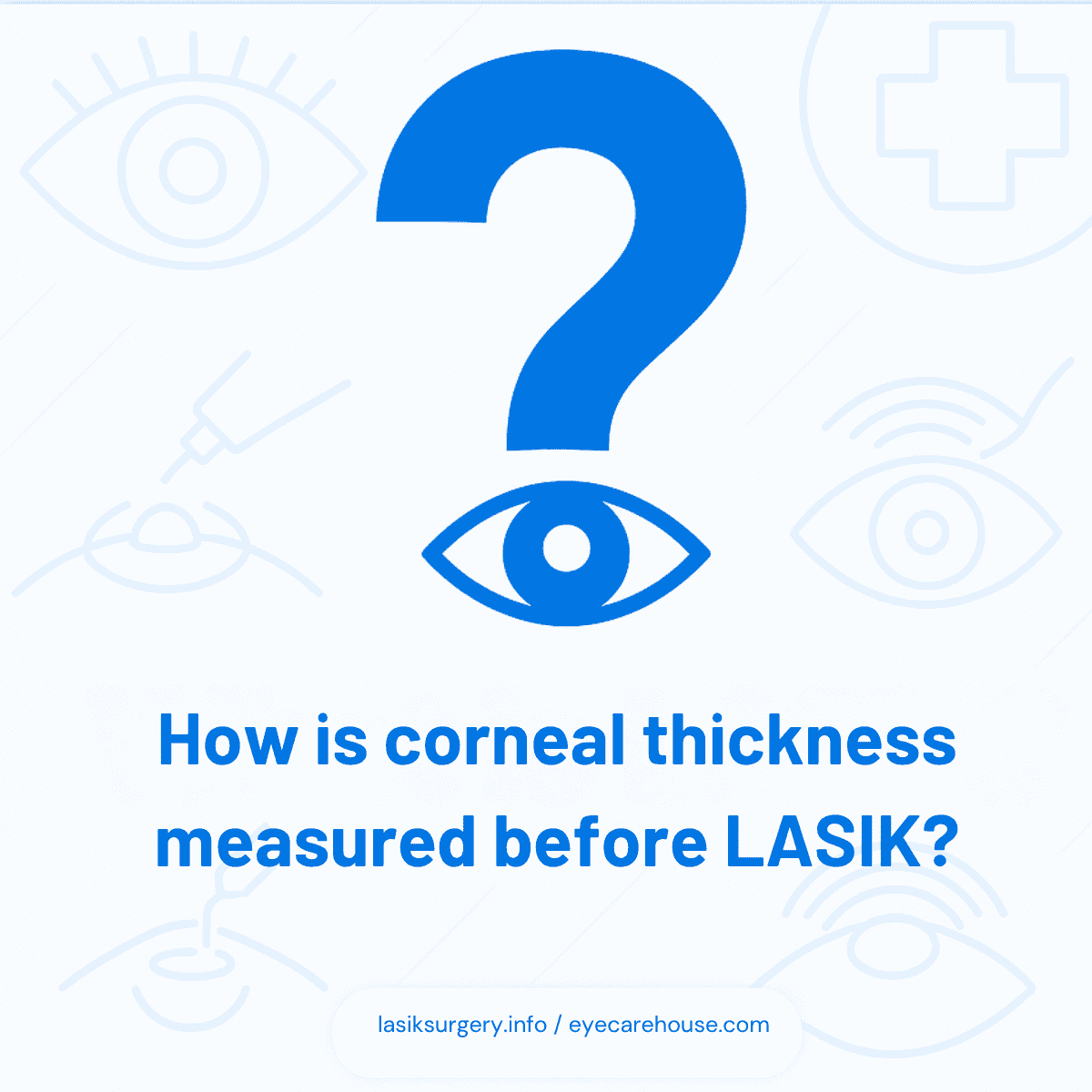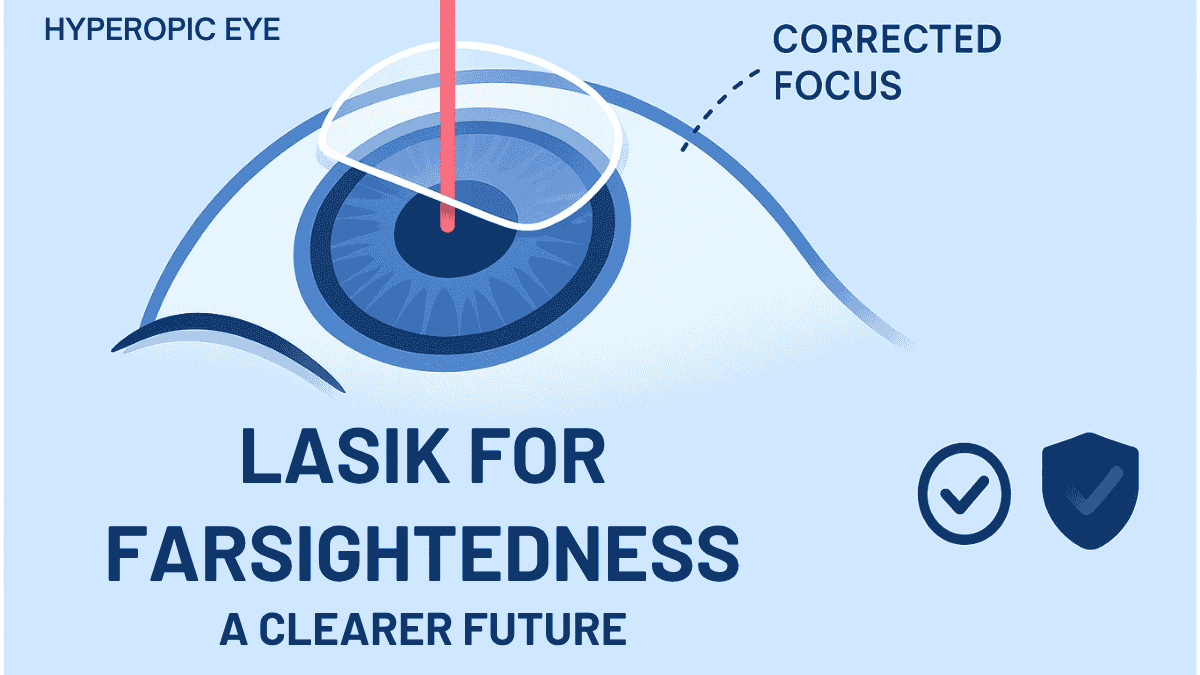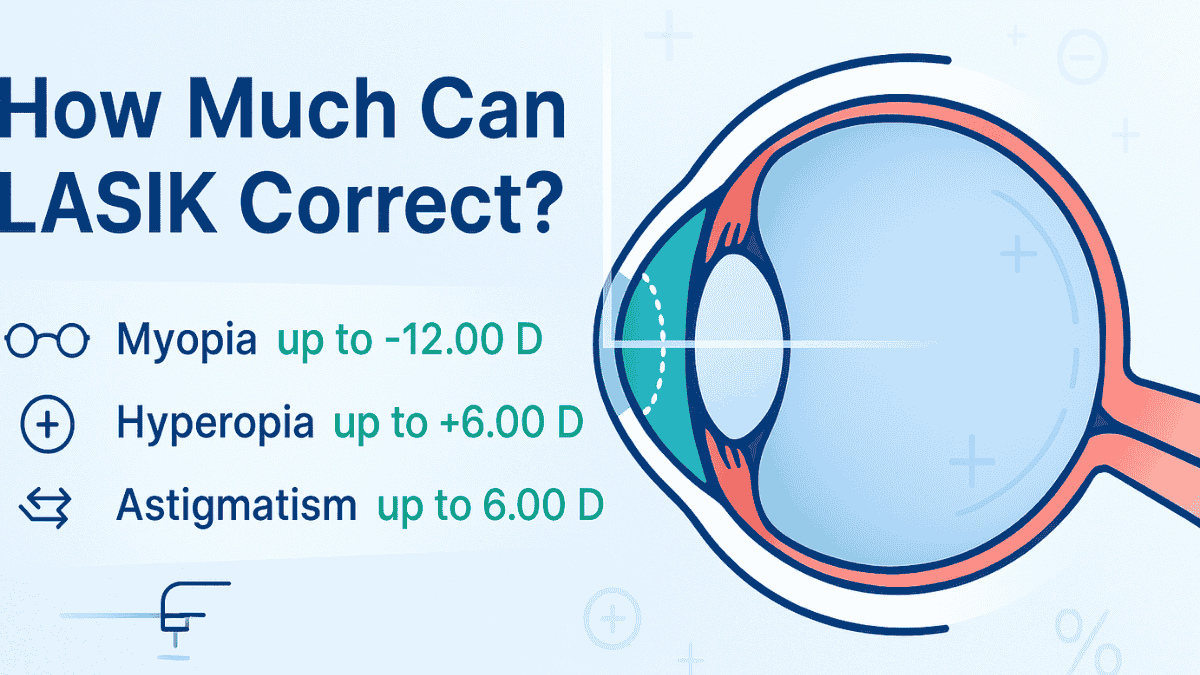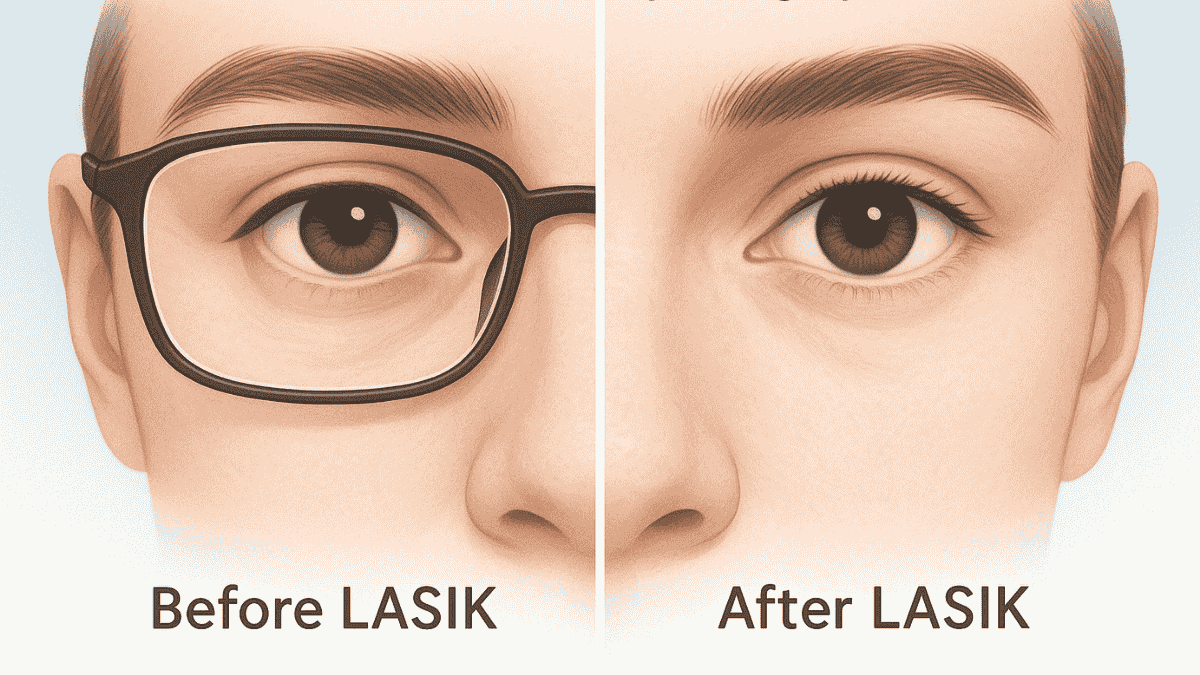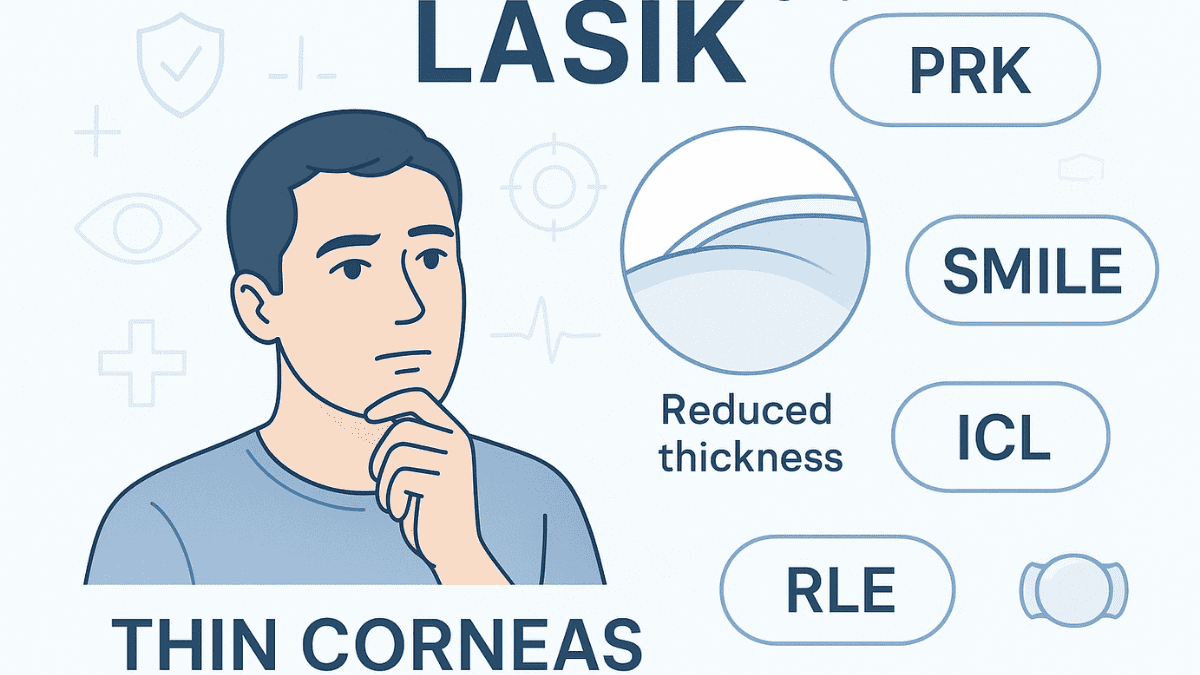
Considering LASIK but worried about your thin corneas? You’re not alone. Many people discover they have thin corneas when exploring laser eye surgery options. This can feel like a roadblock, but don’t lose hope for effective vision correction.
There are still ways to improve your vision, even if traditional LASIK, a common type of lasik laser eye surgery, isn’t the best fit for your cornea LASIK needs. Thin cornea LASIK options are emerging thanks to advancements in diagnostic tools and customized treatment plans. Understanding your specific corneal condition is the first step towards finding a suitable solution. It’s important to discuss your corneal health with an eye surgeon.
Let’s explore what thin corneas mean for laser eye surgery, the potential risks involved with surgery cornea procedures, and what alternatives might work better for you. We’ll examine the latest techniques and technologies that are expanding vision correction options for people with thin corneas. This information can help you prepare for a conversation about your eye care.
Table of Contents
Understanding Thin Corneas and LASIK
Your cornea is the clear, dome-shaped surface at the front of your eye. It plays a crucial role in focusing light, contributing significantly to your overall laser vision capabilities. When we talk about thin corneas in relation to the LASIK procedure, we’re referring to corneas that are below the generally accepted thickness for this specific type of eye surgery.
Related Article
LASIK Eye Surgery: What You Need to KnowMost eye surgeons prefer a corneal thickness of at least 500 microns (about half a millimeter) for standard LASIK eye surgery. This standard allows enough corneal tissue for reshaping while maintaining the cornea’s structural integrity after the LASIK laser application. A sufficient cornea thickness is important for the long-term success of LASIK eye procedures.
If your corneas are thinner than this, it doesn’t automatically disqualify you from all forms of laser vision correction, but it does require careful consideration and a thorough evaluation by an experienced eye surgeon. Your individual cornea thickness will be a primary factor in determining the best course of action for your refractive error. Some individuals naturally have thinner corneal tissue, while certain conditions can also affect cornea thickness.
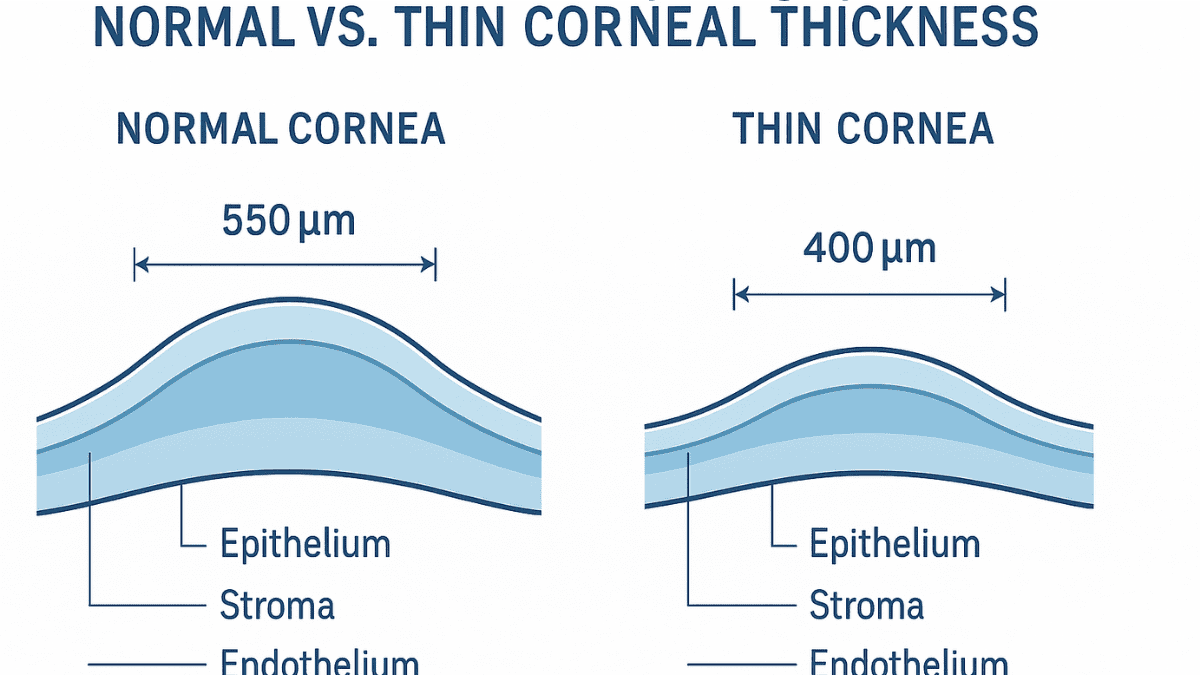
Why Corneal Thickness Matters in LASIK
LASIK, a popular form of laser eye surgery, works by using a laser to reshape your cornea, correcting refractive errors like nearsightedness, farsightedness, and astigmatism. During the LASIK eye procedure, a thin corneal flap is created in the cornea’s outer layer. This flap is lifted, and the underlying corneal tissue is then precisely reshaped with an excimer laser.
Adequate corneal thickness is critical for two main reasons. Firstly, it confirms there’s enough tissue to reshape for the desired vision correction without weakening the cornea’s overall structure. The amount of tissue removed depends on the severity of your refractive error and your lens prescription.
Secondly, sufficient thickness reduces the risk of post-surgical complications like corneal ectasia. This is a rare but serious condition where the cornea becomes unstable and bulges outward, significantly impacting vision. Maintaining a sufficient residual stromal bed beneath the flap is vital for the cornea’s biomechanical stability after any laser eye surgery corneal procedure.
Related Article
Blurry Vision After LASIK: Causes and What to Expect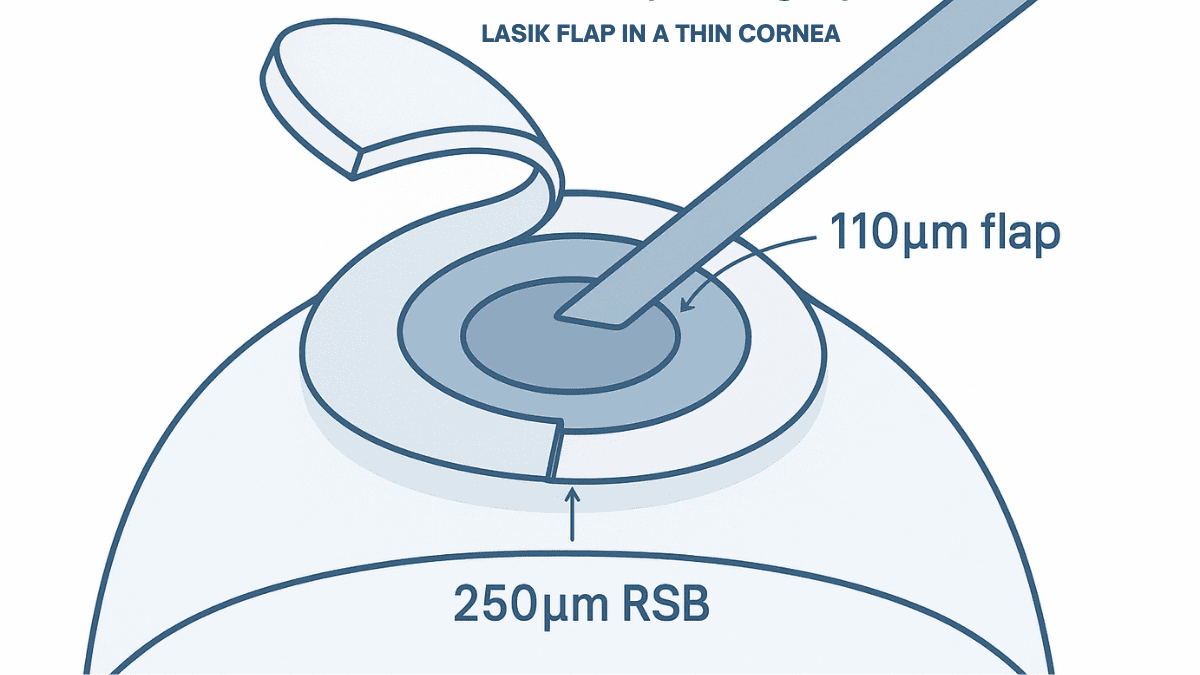
Risks of LASIK with Thin Corneas
While LASIK is generally safe and effective for many, performing corneal reshaping on thin corneas can increase certain risks. Careful patient selection is paramount to minimize these potential issues. Understanding these risks helps in making an informed decision about your vision correction options.
One significant concern is corneal ectasia. As mentioned, this is a rare but potentially serious complication where the cornea, post eye surgery cornea treatment, becomes structurally unstable and progressively bulges outward, leading to distorted vision. Thin corneas inherently have less structural reserve, making this risk higher if too much tissue is altered or removed.
Another risk is undercorrection. There might not be enough corneal tissue to safely perform the full correction needed for your vision, potentially requiring additional procedures or continued reliance on glasses or a contact lens. This is particularly relevant for individuals with high prescriptions and thin corneas.
Dry eye symptoms are a common side effect of LASIK surgery, and this condition can sometimes be more pronounced or prolonged in people with thin corneas. The creation of the corneal flap can affect corneal nerves, which play a role in tear production and ocular surface health. Managing dry eyes post-operatively is an important part of recovery.
Related Article
Managing Dry Eye Syndrome: Causes and TreatmentsFlap complications can also arise. While modern femtosecond lasers have improved flap creation, thin corneas can sometimes make it more challenging to create a uniform and stable corneal flap during the LASIK eye surgery. Issues could include incomplete flaps, buttonholes, or free caps, although these are uncommon with experienced surgeons.
These risks don’t mean LASIK is impossible with thin corneas, but they do require a detailed evaluation and an honest discussion with your eye surgeon. A thorough assessment will determine if you are a suitable candidate for this specific refractive surgery. Alternatives may be suggested if the risks are deemed too high.
Related Article
LASIK Eye Surgery Risks & Side EffectsAssessing Your Eligibility for Thin Cornea LASIK
Determining whether you’re a good candidate for LASIK with thin corneas involves several important diagnostic steps. An experienced eye surgeon will conduct a comprehensive examination to evaluate your overall eye health and corneal parameters. This assessment is crucial for safe and effective vision correction.
Related Article
What to Expect During a LASIK Consultation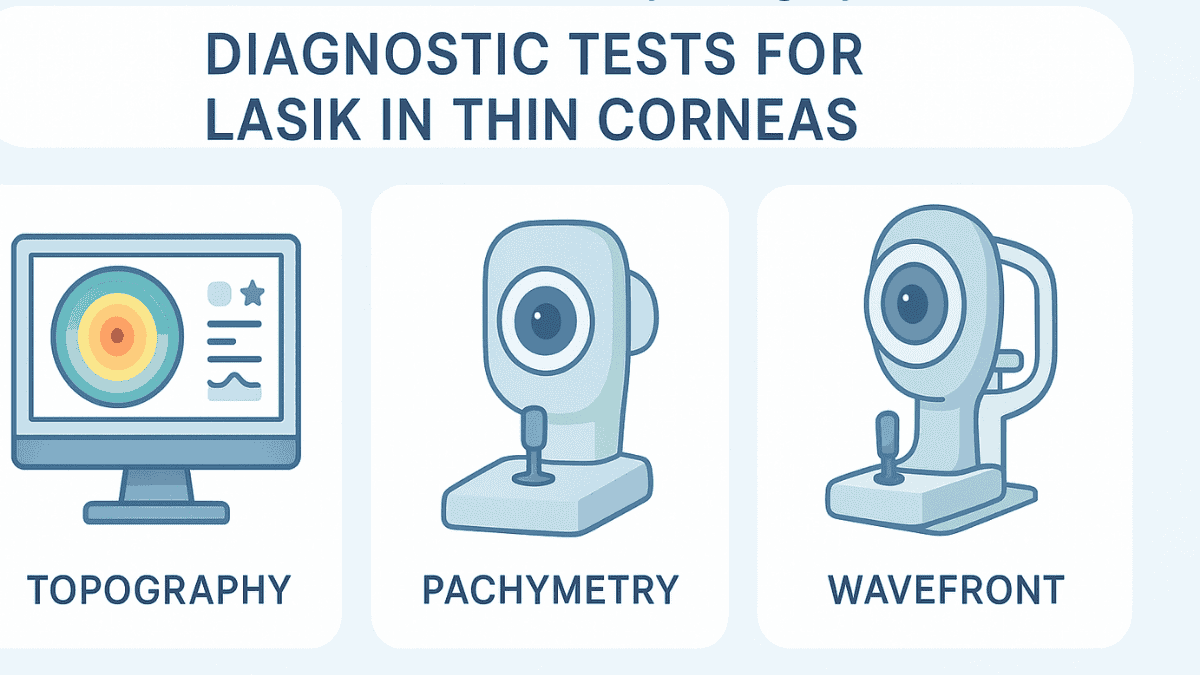
Corneal Topography
This non-invasive imaging test creates a detailed, three-dimensional map of your cornea’s surface curvature and shape. It helps your doctor assess not only the thickness across the entire cornea but also detect any irregularities or early signs of conditions like keratoconus, which would make LASIK unsuitable. Corneal topography is essential for planning any cornea surgery procedure.
Pachymetry
This advanced technology creates a detailed map of your eye’s unique optical imperfections, including higher-order aberrations that go beyond standard refractive error. This allows for more precise, customized treatment planning if LASIK is considered. For thin corneas, precise ablation is even more critical to conserve tissue.
Your eye doctor will use these tests, along with a comprehensive eye exam that includes checking your current contact lens prescription or glasses prescription, to determine if LASIK is a safe and appropriate vision correction option for you. They will also assess for issues like pre-existing dry eye. Being a suitable candidate means the benefits outweigh the potential risks.
Alternatives to Traditional LASIK for Thin Corneas
If traditional LASIK isn’t recommended due to your thin corneas, don’t worry. Several excellent vision correction options can still help you achieve better vision without compromising corneal integrity. These alternatives to laser eye surgery are often safer for individuals with insufficient cornea thickness.
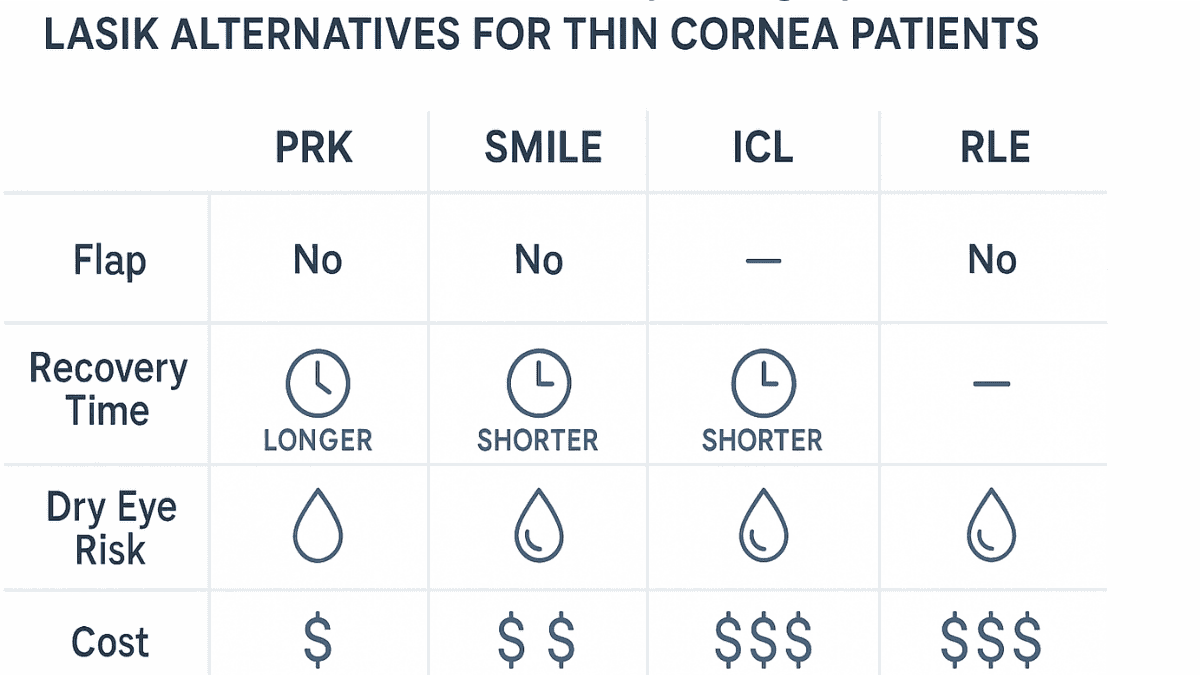
PRK (Photorefractive Keratectomy)
PRK is a type of refractive surgery similar to LASIK in that it uses an excimer laser to reshape the cornea. However, PRK doesn’t involve creating a corneal flap. Instead, the cornea’s outermost epithelial layer is gently removed, and the laser is applied directly to the surface of the underlying stromal tissue; this layer then grows back naturally over a few days.
This flapless technique makes PRK a safer option for many individuals with thin corneas because it conserves more corneal tissue. The visual recovery from PRK can be slower than LASIK, with some initial discomfort, but the long-term visual outcomes are comparable. It is often preferred for patients with active lifestyles or those in professions with a risk of eye trauma.
Related Article
Safe Alternatives to LASIK: PRKSMILE (Small Incision Lenticule Extraction)
SMILE is a newer, minimally invasive laser vision correction procedure. It uses a femtosecond laser to create a small, precise, lens-shaped piece of tissue (lenticule) within the cornea. This lenticule is then removed through a very small incision (typically 2-4mm), changing the cornea’s shape to correct the refractive error.
Because SMILE does not create a large flap and involves a smaller incision, it may offer benefits in terms of corneal biomechanical stability and potentially a lower risk of dry eyes compared to LASIK. This can make SMILE a good option for some people with moderately thin corneas and myopia or astigmatism. Its suitability for your specific cornea thickness will be assessed by your eye surgeon.
Related Article
Safe Alternatives to LASIK: Smile Laser Eye SurgeryICL (Implantable Collamer Lens)
The ICL, or implantable collamer lens, represents a significant advancement in vision correction options, especially for those not suitable for corneal laser procedures. Rather than reshaping your cornea, this phakic IOL (phakic intraocular lens) procedure involves an eye surgeon implanting a special, biocompatible lens inside your eye, typically between the iris and your natural lens. The EVO Visian ICL is a well-known example of this technology.
This implantable collamer lens is made from a unique material called collamer, a collagen copolymer that is highly compatible with the eye. The Visian ICL can correct a wide range of refractive errors, including high myopia (nearsightedness), hyperopia (farsightedness), and astigmatism, often providing sharp, clear laser vision. A major advantage of the implantable collamer technology is that it does not involve removing any corneal tissue, making it an excellent choice for patients with very thin corneas, dry eye syndrome, or high prescriptions outside the range treatable by LASIK.
The ICL procedure is also reversible; the collamer lens can be removed if necessary. This makes it a flexible long-term vision correction solution. Many patients report excellent night vision and overall satisfaction with their phakic intraocular lens.
Related Article
Safe Alternatives to LASIK: ICL vs LASIKRefractive Lens Exchange (RLE)
Refractive Lens Exchange, sometimes called lens replacement surgery or clear lens extraction, is another intraocular lens procedure. RLE is similar to cataract surgery; however, in RLE, the eye’s natural lens is removed and replaced with an artificial intraocular lens (IOL) primarily to correct refractive error, even before a cataract has developed. This procedure can correct high degrees of farsightedness, nearsightedness, and astigmatism.
RLE is often a good option for individuals over 40 or 50 who may be experiencing presbyopia (age-related loss of near vision) or have early signs of cataracts, as it addresses these issues simultaneously. Because RLE does not involve altering the cornea, it is suitable for patients with thin corneas. Various types of advanced IOLs can be used, including multifocal lenses like the Symfony IOL, or even a light adjustable lens that allows for post-operative refinement of the lens prescription for highly customized vision.
This lens exchange procedure eliminates the possibility of developing cataracts later in life, as the natural lens is removed. Your eye surgeon can discuss if this is a more suitable path than laser LASIK for your specific needs and age group.
Related Article
Laser Eye Surgery Age Limits: What Parents Should KnowAdvanced Surface Ablation (ASA)
This term covers several procedures similar to PRK, such as LASEK and Epi-LASIK, all of which involve treating the surface of the cornea without creating a deep corneal flap. These techniques vary slightly in how the epithelial layer is managed but share the commonality of preserving more corneal stroma. These are generally considered safe correction options for thin corneas, offering excellent vision correction results while minimizing risks associated with flap creation.
Innovations in Thin Cornea LASIK
Technology in laser eye surgery and related eye care is constantly advancing, opening up new possibilities and enhancing safety for people with corneas previously considered too thin for traditional approaches. These innovations focus on precision and corneal tissue preservation. These advancements in the LASIK laser field are particularly beneficial.
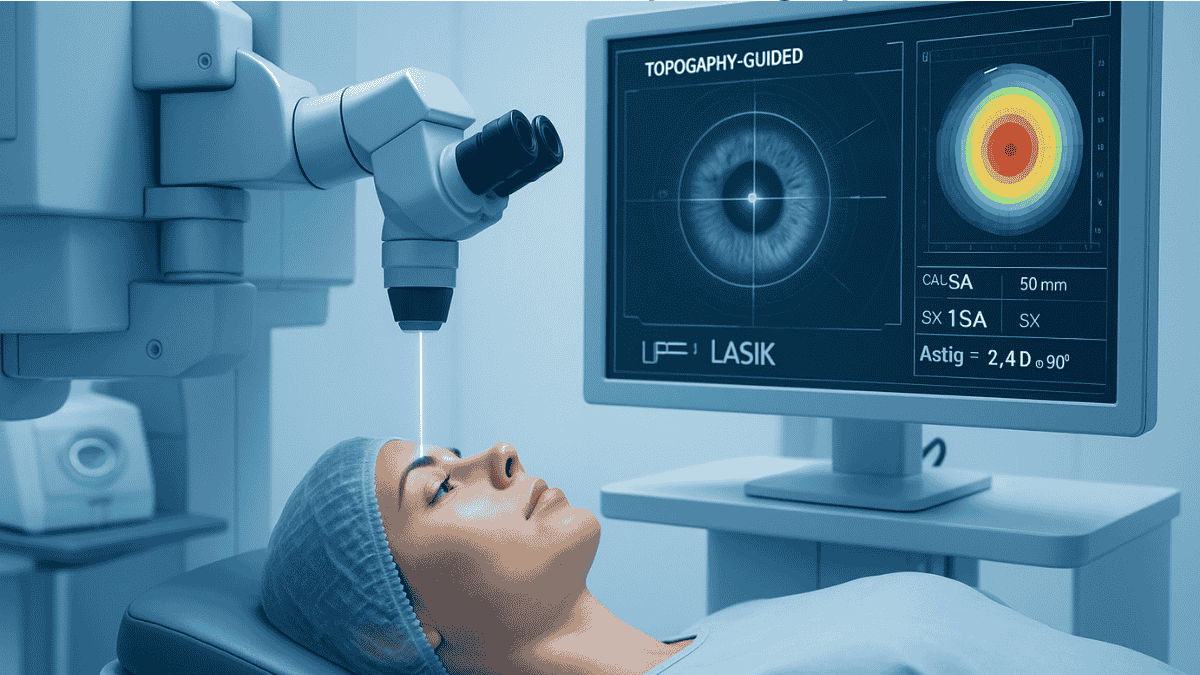
Topography-Guided LASIK
This advanced technique uses detailed corneal mapping, derived from corneal topography, to guide the laser treatment with exceptional precision. It doesn’t just correct the sphere and cylinder of your lens prescription; it also addresses subtle irregularities on the corneal surface. This can lead to more precise visual outcomes and potentially allow for less corneal tissue removal, which is advantageous for thinner corneas.
Wavefront-Optimized LASIK
This technology aims to preserve the natural aspheric shape of your cornea as much as possible during the laser ablation process. By minimizing induced spherical aberrations, wavefront-optimized LASIK can enhance the quality of vision, especially in low light conditions. Maintaining the cornea’s natural curvature profile can also be beneficial for the biomechanical integrity of those with thin corneas undergoing LASIK eye surgery.
Femtosecond Lasers
The use of femtosecond lasers for corneal flap creation has become a standard in modern LASIK. These ultra-fast lasers allow for highly precise, customizable flap thickness and diameter. For patients with thin corneas, this precision is particularly valuable, as the surgeon can create a thinner, more predictable flap, thereby preserving more of the underlying stromal tissue for the actual vision correction part of the LASIK procedure.
These technological advancements, combined with the skill of an experienced eye surgeon, can sometimes make a modified LASIK approach feasible for individuals who might not have been suitable candidates in the past. However, a thorough evaluation is always necessary to determine the safest and most effective path for vision correction. Each case of cornea LASIK requires individual assessment.
Making the Decision: Is Thin Cornea LASIK Right for You?
Deciding whether to pursue any form of LASIK eye treatment with thin corneas, or opt for an alternative refractive surgery, is a significant personal choice. This decision should always be made in close consultation with an experienced eye surgeon who specializes in refractive errors and corneal health. Several factors will influence this important decision.
Your overall eye health is paramount. Conditions like severe dry eyes, glaucoma, or signs of corneal instability like keratoconus must be carefully evaluated. The exact thickness of your corneas, measured by pachymetry, will be a key determinant. Your refractive error – the strength of your glasses or contact lens prescription – also plays a crucial role, as higher prescriptions require more tissue removal.
Consider your lifestyle and vision needs. What are your daily activities, hobbies, and career requirements? Your comfort level with the potential risks associated with any eye surgery corneal procedure versus the benefits of improved vision without corrective lenses must also be weighed. Being a suitable candidate means aligning medical safety with personal expectations.
Remember, a good eye surgeon will prioritize the health and safety of your eyes above all else. They should be transparent about why a particular correction option is recommended and be willing to discuss all alternatives, such as PRK, EVO ICL, or even refractive lens exchange, if they believe standard LASIK isn’t the best option for you. Generally speaking, conservative approaches are favored for thin corneas.
Preparing for Your Consultation
If you’re considering LASIK surgery or other vision correction options but are concerned about thin corneas, proper preparation for your consultation can help you make the most of your appointment. Gather your complete eye health history, including past prescriptions for glasses and contact lenses, and details of any eye conditions or previous eye surgery. This information helps the eye surgeon understand your visual journey.
Make a comprehensive list of all medications you’re currently taking, including over-the-counter drugs, supplements, and eye drops. Write down any questions or concerns you have about the LASIK procedure, its risks, recovery, long-term effects, and the various alternatives suitable for thin corneas. No question is too small when it comes to your eye care.
Be prepared to discuss your lifestyle, visual goals, and what you hope to achieve with vision correction. Inquire about practical matters too; some clinics may offer patient financing options to help manage the cost, and understanding this upfront can be helpful. It is also wise to ask about their privacy policy regarding how your personal and medical information is handled.
When scheduling, ask about clinic office hours; many provide appointments at various times like pm Tuesday, pm Wednesday, or pm Thursday, and some even offer pm Saturday slots. Note that most clinics are closed Sunday, and some follow a saturday closed sunday closed schedule. Finding a time that works for you allows for a relaxed, unhurried consultation. Don’t hesitate to seek a second opinion if you feel unsure or want more information; reputable surgeons support patients in making informed decisions.
You might also ask if the clinic offers a detailed LASIK FAQ resource, either online or in print, which can answer many common questions. Some clinics even provide initial consultations for free; LASIK consultations of this nature can be a good way to gather information without immediate commitment.
Living with Thin Corneas: Beyond LASIK
If you find that LASIK or its surgical alternatives aren’t suitable for you due to exceptionally thin corneas or other eye health factors, remember that there are still excellent ways to manage your vision and maintain good eye health. Effective vision correction doesn’t always involve a laser or surgery. Consistent eye care is essential for everyone, especially those with known corneal conditions.
High-quality contact lenses are a mainstay for many. This includes advanced soft lenses, rigid gas permeable (RGP) lenses, or even specialty scleral lenses for hard-to-fit eyes or those with irregular corneas. Your current contact lens prescription can often be optimized with newer lens technologies for better comfort and vision.
Advanced eyeglass lenses also offer superb vision. Options like high-index materials make lenses thinner and lighter, anti-reflective coatings reduce glare, and progressive lenses can address presbyopia, reducing the need for separate reading glasses. A precise lens prescription is the foundation for effective eyeglasses.
Orthokeratology (Ortho-K) is another non-surgical method. It involves wearing specially designed RGP contact lenses overnight to temporarily reshape your cornea. You remove the lenses in the morning and can typically see clearly throughout the day without glasses or daytime contact lenses. This can be an option for some individuals with mild to moderate myopia.
Even if surgery isn’t an option now, future advancements in eye care may offer new solutions. Regular check-ups with your eye doctor are crucial for monitoring your eye health, updating your lens prescription as needed, and discussing any new developments. Eventually, for many, the natural lens will cloud and form a cataract, at which point cataract surgery (a form of lens exchange) becomes a necessary and highly effective procedure to restore vision, often with options to correct pre-existing refractive errors with specialized intraocular lens implants like a Symfony IOL or even a light adjustable lens.
Conclusion
Having thin corneas doesn’t necessarily mean you can’t improve your vision through a surgical procedure. While it may make traditional LASIK eye surgery more complex or less advisable, numerous vision correction options and advanced techniques, such as PRK, SMILE, or the EVO Visian ICL, can still help you achieve clearer vision. Understanding your cornea thickness is just one part of the equation.
The most important step is working with an experienced and thorough eye surgeon. They can fully evaluate your eyes, discuss your refractive error, and recommend the safest, most effective correction options for your specific situation. Proper assessment ensures you are a suitable candidate for any chosen procedure.
Whether it’s a modified laser LASIK technique, an alternative refractive surgery like an implantable collamer lens or refractive lens exchange, or even advanced non-surgical methods, there’s likely a solution that can help you see the world more clearly. Educating yourself and having open discussions with your eye care professional will guide you to the best outcome for your vision and eye health. Your journey to better vision correction should be a well-informed one.
Related Article
Is Laser Eye Surgery Worth It? Exploring the BenefitsLASIK can be risky for patients with thin corneas, but newer techniques or alternative procedures may be viable based on diagnostic evaluations.
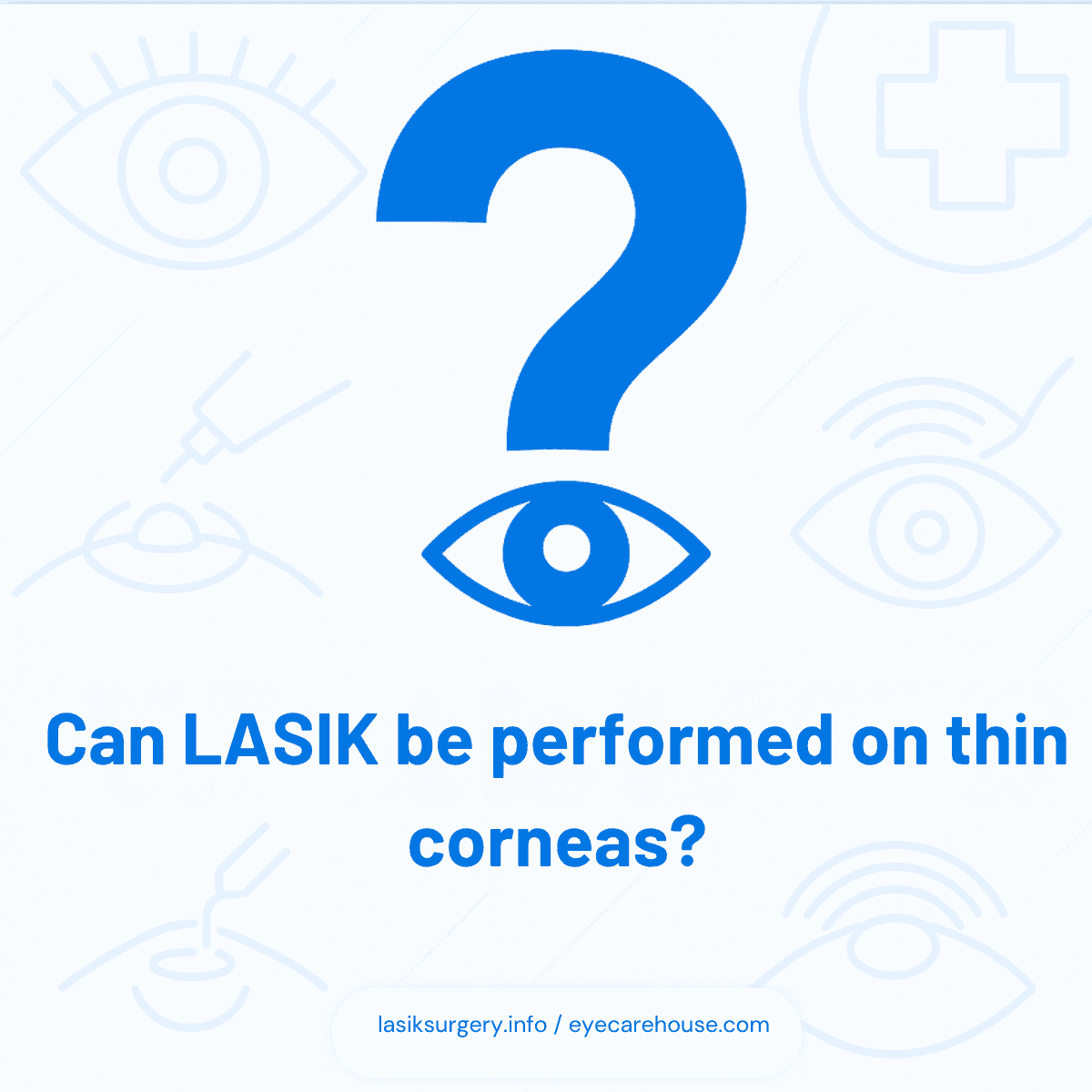
Typically, a minimum of 500 microns is recommended to ensure enough residual corneal bed after creating the LASIK flap.
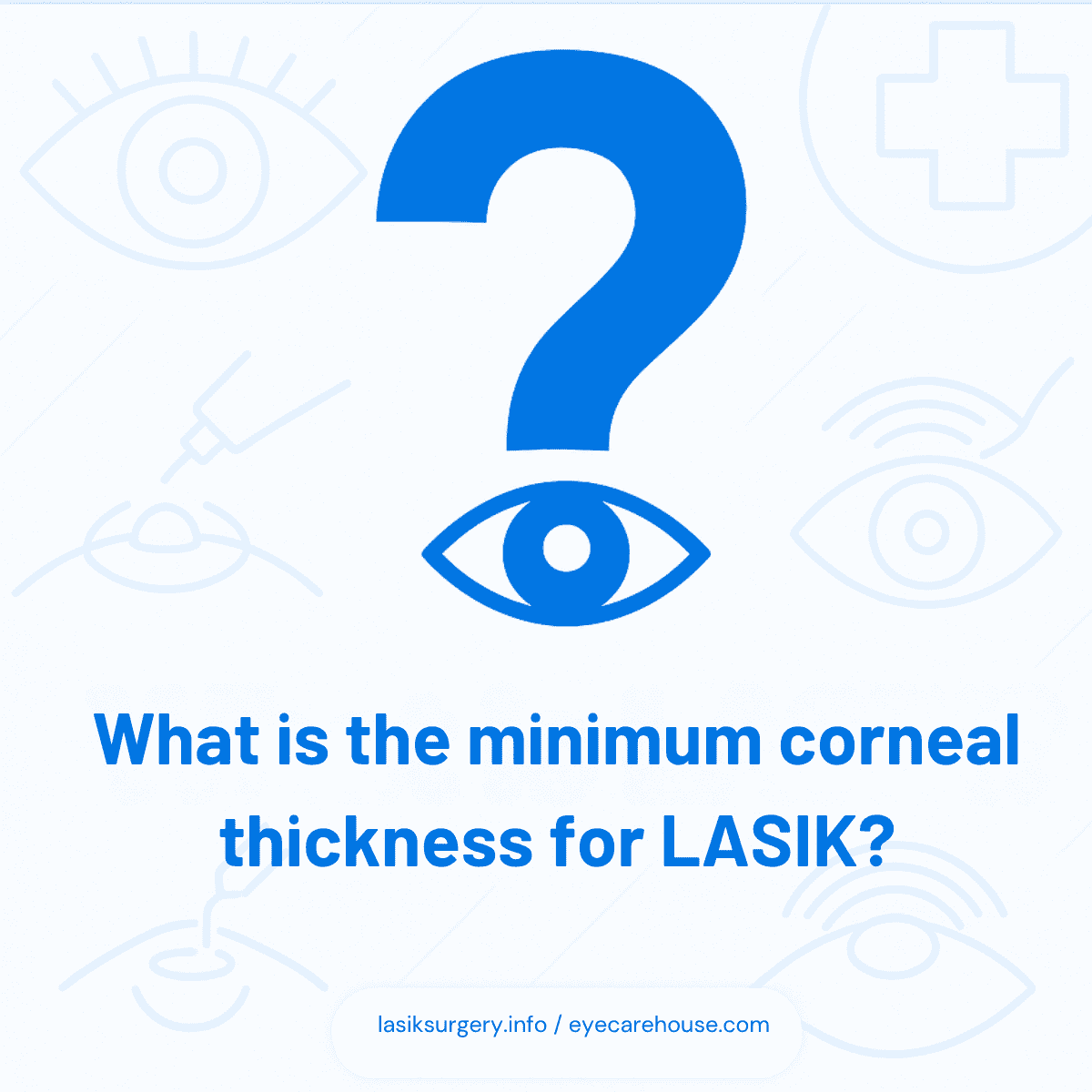
Yes, PRK is often considered safer than LASIK for thin corneas as it does not involve creating a flap, preserving more corneal tissue.
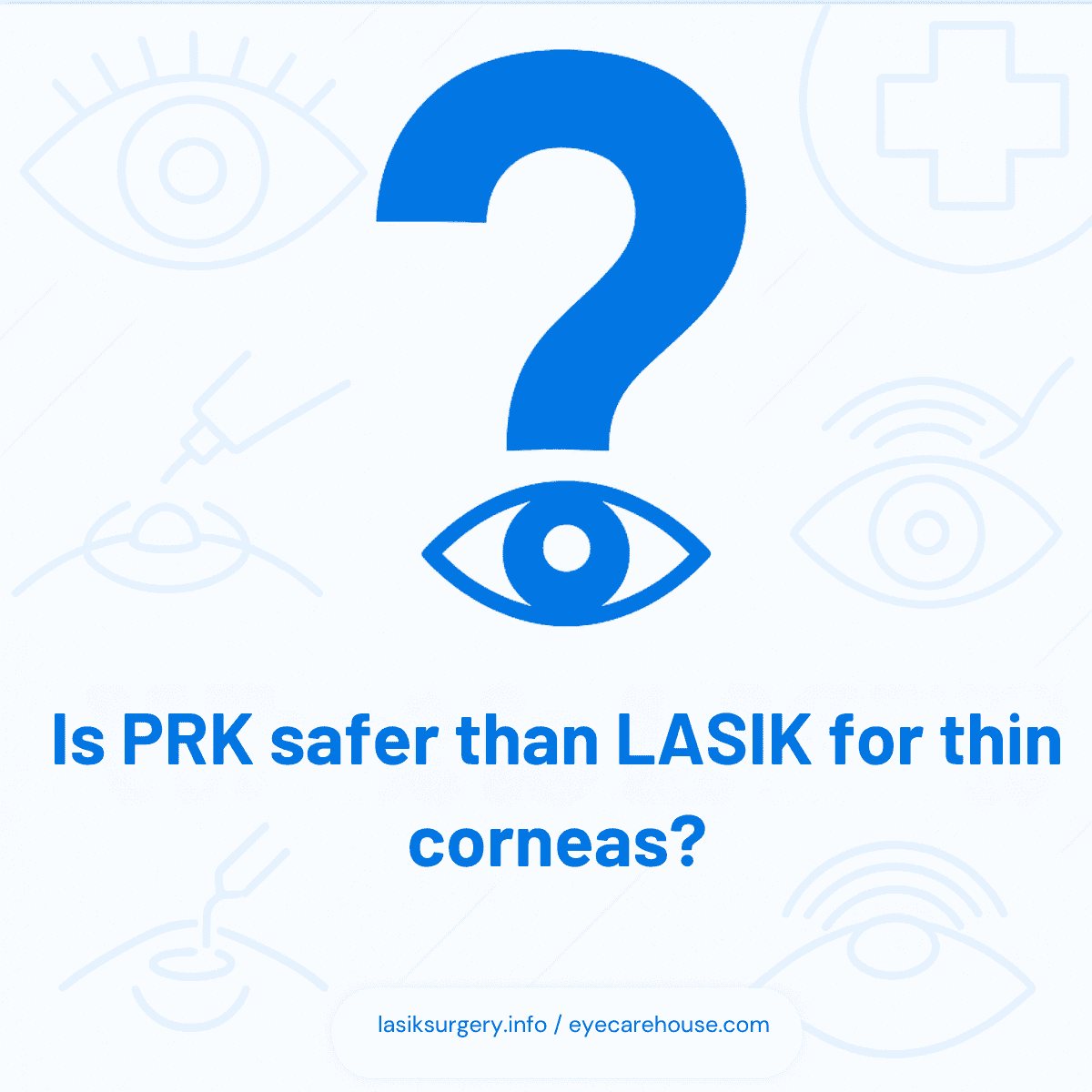
Risks include corneal ectasia, poor healing, and unpredictable visual outcomes due to insufficient stromal bed.
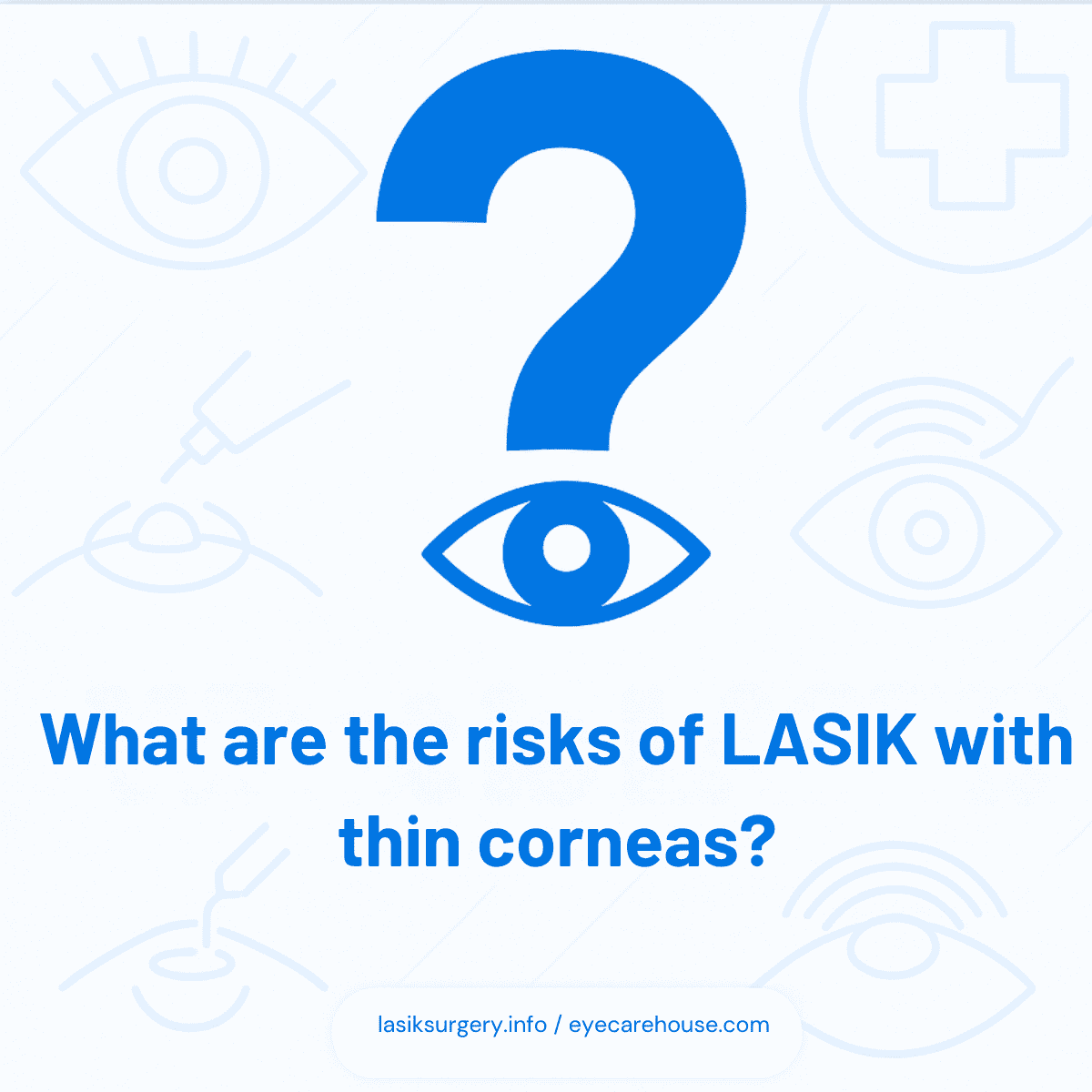
Corneal thickness is measured using pachymetry, either with ultrasound or optical coherence tomography (OCT).
